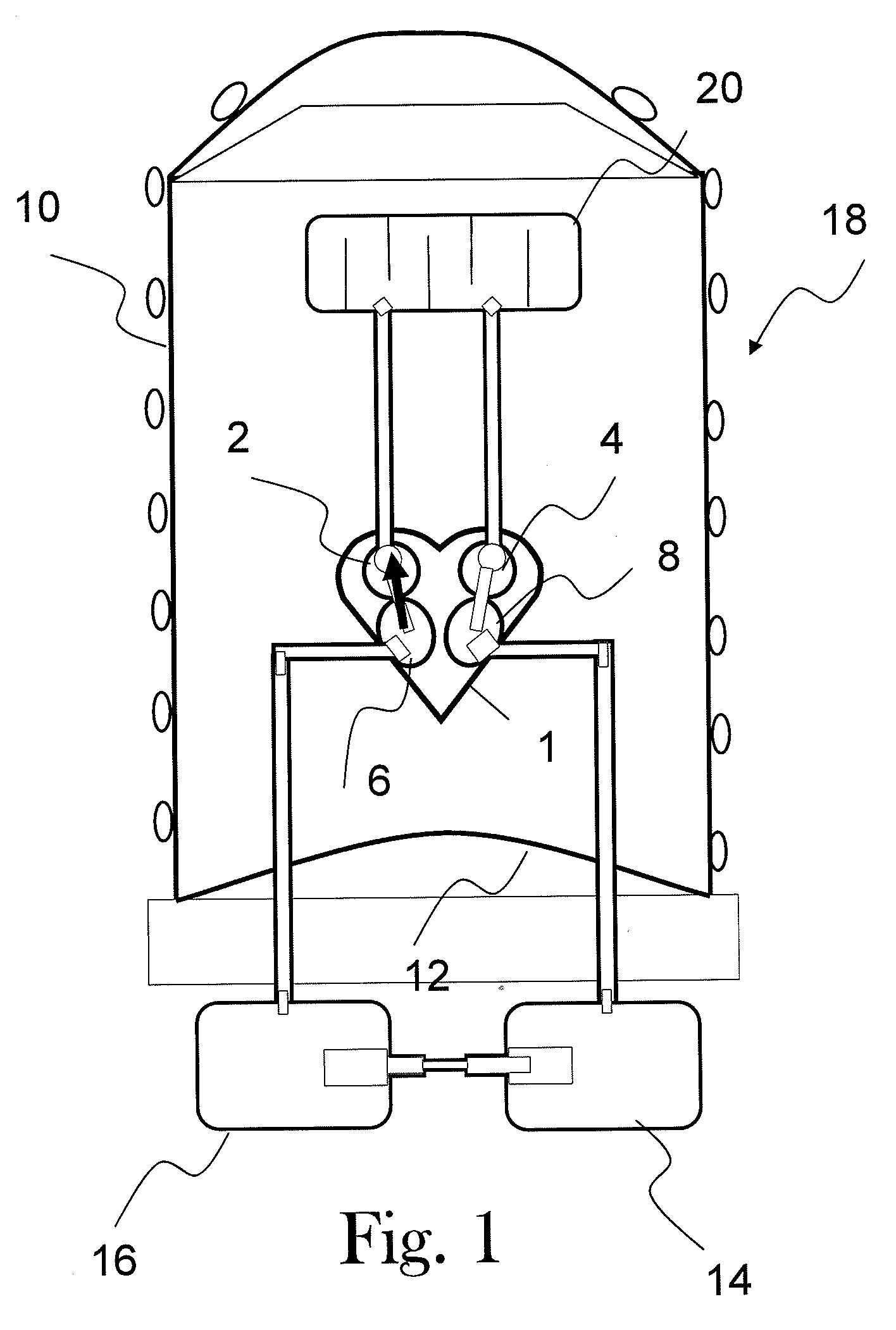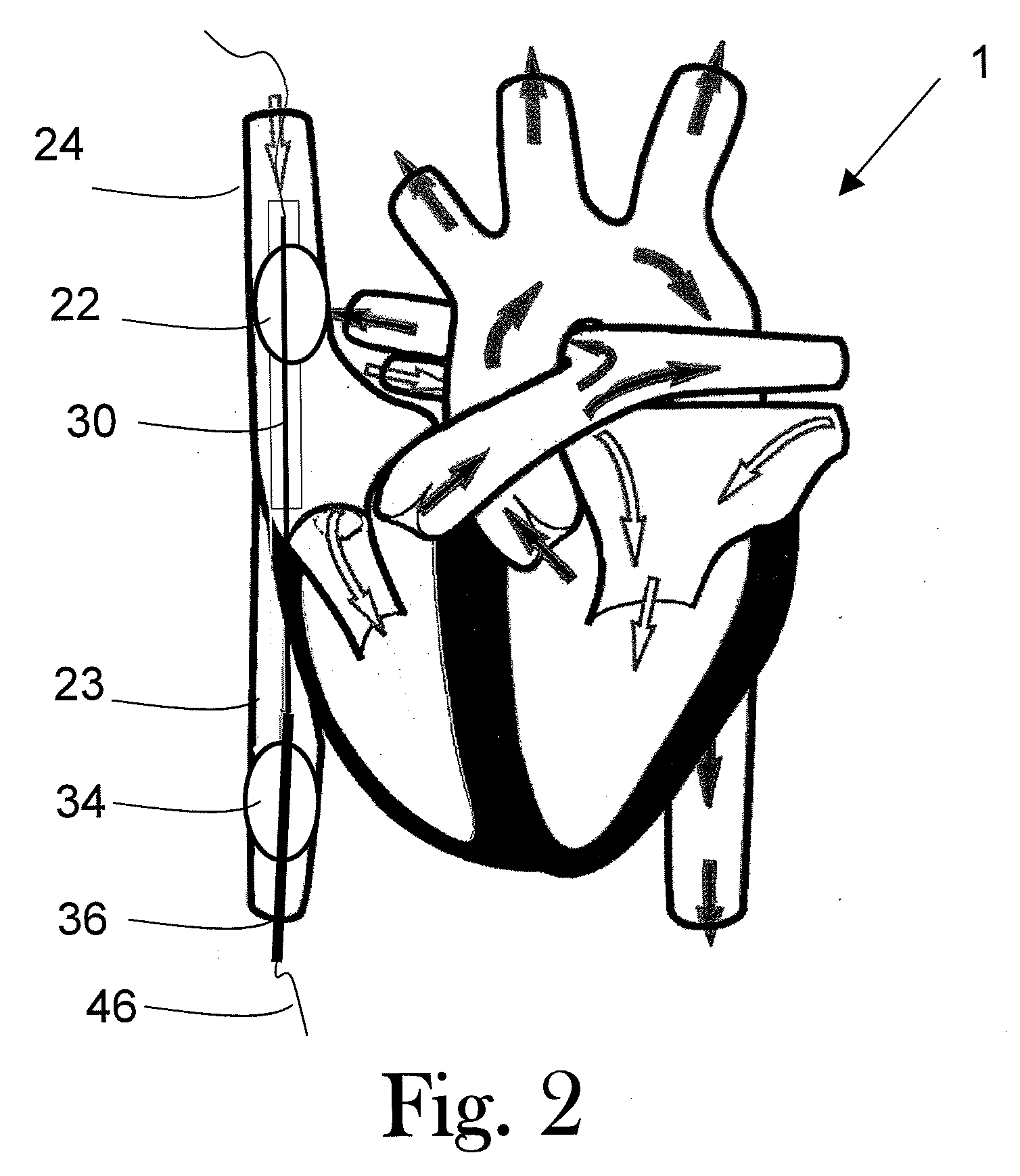Method for controlling the systemic pressure in cardiac operations
a systemic pressure and cardiac operation technology, applied in the field of systemic pressure control in cardiac operations, can solve the problems of cardiac irritability, lack of precise control of blood pressure, and the inability to alter the length of the separation of balloons and the diameter of the balloons themselves, so as to achieve the effect of secure finishing of cardiac operations
- Summary
- Abstract
- Description
- Claims
- Application Information
AI Technical Summary
Benefits of technology
Problems solved by technology
Method used
Image
Examples
Embodiment Construction
[0044]FIG. 1 shows a mechanical circuit which represents schematically an equivalent of the blood circuit of a human body. This sketch is used to explain a theory on the rising of the systemic pressure. The cardiopulmonary unit, which includes the heart 1 consists schematically of two one-way chambers 2, 4 (namely the right and left atrials), two pumps 6, 8 (namely the right and left ventricles) which are surrounded by the ribcage 10 and the diaphragm 12 and lungs (which cause a changing intrathoracic pressure). To complete the diagram, the arterial and the venous network can be considered as two reservoirs 14, 16, which are located outside of the thorax 18.
[0045]The flow Q of the blood is considered to be proportional to the pressure difference ΔP=P2−P1; the amount of blood returning to right side of the heart 2, 6 from the venous reservoir 16 is determined by the difference between intrathoracic and extrathoracic pressures. This is not the case for the left side 4, 8 of the heart ...
PUM
 Login to View More
Login to View More Abstract
Description
Claims
Application Information
 Login to View More
Login to View More - R&D
- Intellectual Property
- Life Sciences
- Materials
- Tech Scout
- Unparalleled Data Quality
- Higher Quality Content
- 60% Fewer Hallucinations
Browse by: Latest US Patents, China's latest patents, Technical Efficacy Thesaurus, Application Domain, Technology Topic, Popular Technical Reports.
© 2025 PatSnap. All rights reserved.Legal|Privacy policy|Modern Slavery Act Transparency Statement|Sitemap|About US| Contact US: help@patsnap.com



